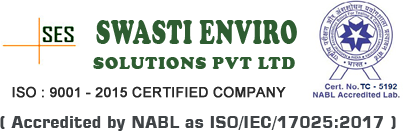Stack Monitoring in Coimbatore

We are a well influential company in Coimbatore in the field of Stack Monitoring. For any questions Contact us.
Stack Monitoring is the process of monitoring the emissions coming out of the stacks to keep a check on the pollutants thrown out in the air. The major pollutants that stacks emit are Carbon Monoxide(CO), Methane Gas(CH4), oxides of Sulphur, and Nitrogen i.e. SOx and NOx, and hydrocarbon compounds.
How stack monitoring is performed?
The stack monitoring is done with the help of Gas Analyzers which are installed at the exhaust point.
Now, there are essentially two types of stack monitoring systems.
- In-Situ Measurement Method
- Extractive Dilution Method
In in-situ measurement system, the emission sensors are placed directly at or inside the stack for emission parameters monitoring. Whereas, in the extractive dilution method, a sample of emission is taken and sent to the analyzers placed away from the emission stack.
Why is continuous monitoring of stack emission parameters important?
- Whenever the emission parameters exceed their defined limits, the key authorities monitoring the emission are responsible to take necessary action and ensure that the emission parameters are within the limits.
- Many industries still carry out the monitoring process with a periodic framework.
- This approach of periodic monitoring, as obvious, wouldn’t allow the plant managers and concerned executives to take necessary action when required.
- The delay or improper management makes the industries liable for a penalty by their respective regulatory bodies in their country. In India, the statutory body which is responsible for regulating emission standards to be followed by industries is named as Central Pollution Control Board(CPCB).
Benefits of Stack Emission Testing
Stack Emission testing is the process of evaluating those gases and their degree of presence in the atmosphere from industries to meet environmental standards. Mostly every manufacturing or operating unit of a company has a chimney, which is called a stack. It emits polluted or wasted gas into the air which increases pollution. Results obtained from this testing process benefits companies to stay within environmental compliance.
Why Stack Emission Testing is Necessary?
Pollutants released in air need to be monitored in order to:
- Meet the environmental standards
- Collect data for Emission records
- Provide data to Environmental Impact Assessment Surveys
- Measure process efficiency and process control
- For the process of Calibration of continuous emission monitors (CEMs)
- Study of the efficiency of process change or newly installed pollution control equipment
Visit us on Google Maps


